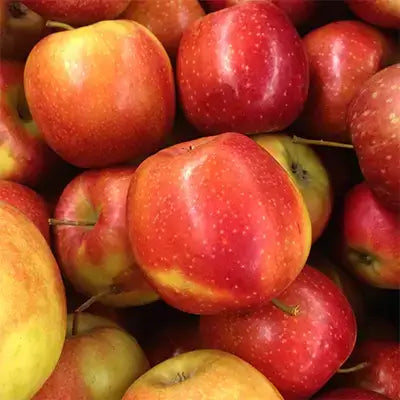Apple trees have a long history as a favored fruit tree in home gardens and commercially. The United States produces about 90% of the commercial crop, with approximately 16% coming from California.
There are many benefits to growing fruiting apple trees.
- Apples are eaten raw but are mainly used for cooking purposes. They can be used in desserts and pies to accompany pork, poultry, and vegetables. Apples are also made into cider and apple juice.
- Apples can be grown successfully by beginner and experienced gardeners. They grow well in various soils, from heavy clay to sandy loam, although they require fertile, well-drained soil.
- Apples have a relatively short growing period, being ready to harvest 110-160 days after fruit buds begin to set in the spring. Planting time is April/May or September/October, depending on the climate in your area of the country.
Types of Apples
- Gala Apple
This variety is one of the most popular and is known for its high quality. The apple tree is medium height, producing bright red fruit and excellent flavor. Gala apples are cooking apples that can be enjoyed fresh or made into pies, sauces, and pickles.
- Red Rome Apple
This variety of apples has not been grown commercially for many years. However, it is still produced in home gardens, especially in the Pacific Northwest, where it is still highly regarded because of its exceptional taste and firm texture when cooked. It can also be used fresh for eating or make fruit compote, pies, and sauce.
- Fuji Apple
This variety is a traditional cooking apple known for its delicacy when eaten fresh. It can also be used in pies, sauces, pickles, or applesauce. Fuji apples mature in mid-September and are one of the early varieties to ripen yearly. It is an excellent apple for crab apple jelly and delicious candied fruit.
- Red Delicious Apple
This apple tree variety was initially bred by the University of Minnesota in Minnesota, United States; It began to be commercially grown, where it received its name. Red Delicious apples are outstanding for both eating and cooking. The fruit is firm when cooked and is the most popular apple for applesauce.
- Golden Delicious Apple
This variety was bred by the University of Minnesota in Minnesota, United States; It began to be commercially grown, where it received its name (color). Golden Delicious apples are outstanding for both eating and cooking.
Plum Fruit Tree- Arkansas Black
This apple variety is Arkansas Burbank, Arkansas Black Twig, and Black Twig. It is a firm-textured, medium-sized apple with reddish-purple skin over yellowish flesh. The fruit has an excellent flavor and is primarily used for cooking and processing due to its firm texture.
Apples are very nutritious and full of fiber. They are also low in calories and have lots of vitamins A, B, and C and fiber.



